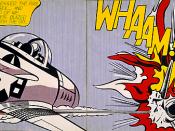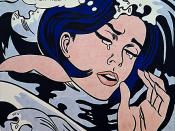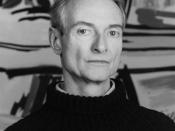The Artist
No other artist is as much identified with Pop Art as Andy Warhol. He was a modernist painter who wanted to get rid of the difference between 'fine art and 'commercial art', and wanted to show the world that art can be found in everyday objects, such as magazine illustrations, comic books, advertising campaigns, etc(Andy Warhol Biography). He started to paint familiar images such as money, comics, dollar signs, food, groceries, women's shoes, celebrities, and newspaper clippings (Andy Warhol Biography). He believed in making his paintings appear as if they were machine made by using silkscreen and replicating images, signifying an assembly line, and reproduced them because he wanted everyone to think alike. He wanted no trace of the "human touch". He wanted the only discrepancies or differences in his artwork to appear caused by a machine and sometimes even deliberately replicated poor quality commercial printing with slurs of ink, and off-register clour, to do just that(Kinsmen 2)..
A very good example of this is with his 6 ft 10 1/4 x 4 ft 9 oil painting, "Green Coca-Cola Bottles" done in 1962. Although it was not his most renowned work, for Warhol it symbolized American cultural values, and democratic equality. An example of this is illustrated in Warhol's quote that, "[a] Coke is always a Coke; the Coke that the president drinks is the same as your Coke or mine"(Foster, Hal, etc. 447). He used silkscreen to give more of an assembly line effect and his repetitive style signified mass media culture and how we see the same things day after day, everywhere we go. He carried this technique with him to later paintings as he became fascinated with the "open sores" of political life. He painted celebrities like Marilyn Monroe, Richard Nixon and images...


